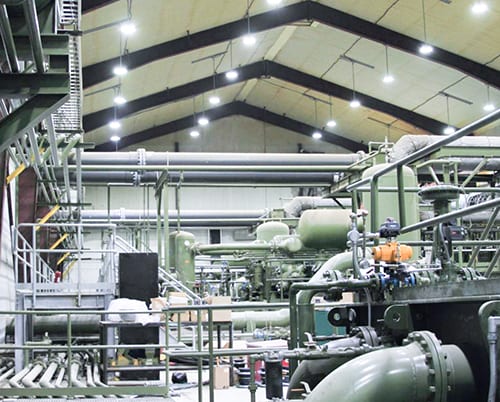 LED lighting has become the new illumination standard in a wide range of industrial applications. There are multiple ways that LEDs amplify efficiency and long-life reliability.
LED lighting has become the new illumination standard in a wide range of industrial applications. There are multiple ways that LEDs amplify efficiency and long-life reliability.
LED technology has dramatically lowered the total cost of lighting for facilities around the world. Additionally, it’s proven to be a safer and more eye-pleasing light source than conventional lighting.
With multiple designs and output options now on the market, there is an LED fixture to fit almost any application, including high-temperature, extreme cold and classified hazardous environments.
Perhaps one of the greatest advantages of state-of-the-art LED technology is it’s ability to integrate with smart lighting control systems. By deploying the right LED technology today, facilities can easily leverage future innovations.
Check out these 4 ways LEDs amplify efficiency
- Free up personnel and resources for mission-critical demands. Conventional lighting maintenance is a constant chore, burdening maintenance staff and eating away at the budget. That means less time and money for equipment upgrades and other bottom-line enhancements. LEDs eliminate this burden, allowing personnel and funds to be used for critical activities.
- Improve control and visibility. Some lighting systems allow for adjustments that reduce burn time and energy consumption. The most advanced LED systems enable access to each individual fixture, providing more detailed monitoring and control to maximize efficiency.
- Understand and optimize workflows. Sensors within LED infrastructure can be used to provide added intelligence to help optimize productivity. For example, motion detectors could help facility managers monitor traffic flow to improve bottlenecks or plan workflow enhancements.
- Use LED lighting networks for data transport. Many LED fixtures already include built-in wireless nodes, which can be used to perform other jobs. For example, Wi-Fi signal boosters could be incorporated to enhance connectivity in dead zones throughout a facility. This would eliminate the need for hard-wired connectivity, helping to reduce IT burden and expense.
This blog post was drafted in partnership with Rockwell Automation.
Related posts
Replacing old switchgear systems: 6 benefits of installing new equipment
Manufacturing industry trends | 2020 anticipated digital transformation tech